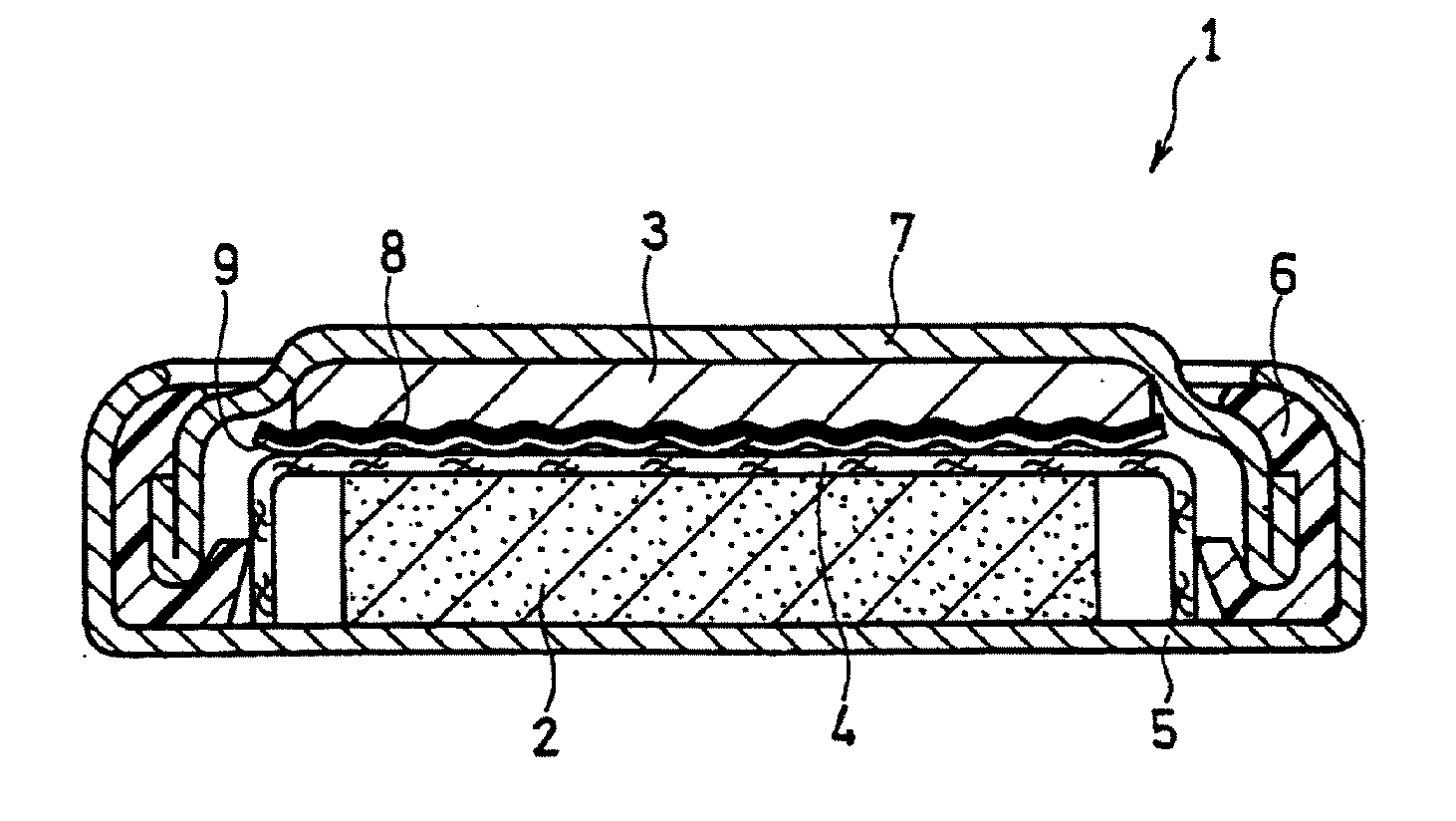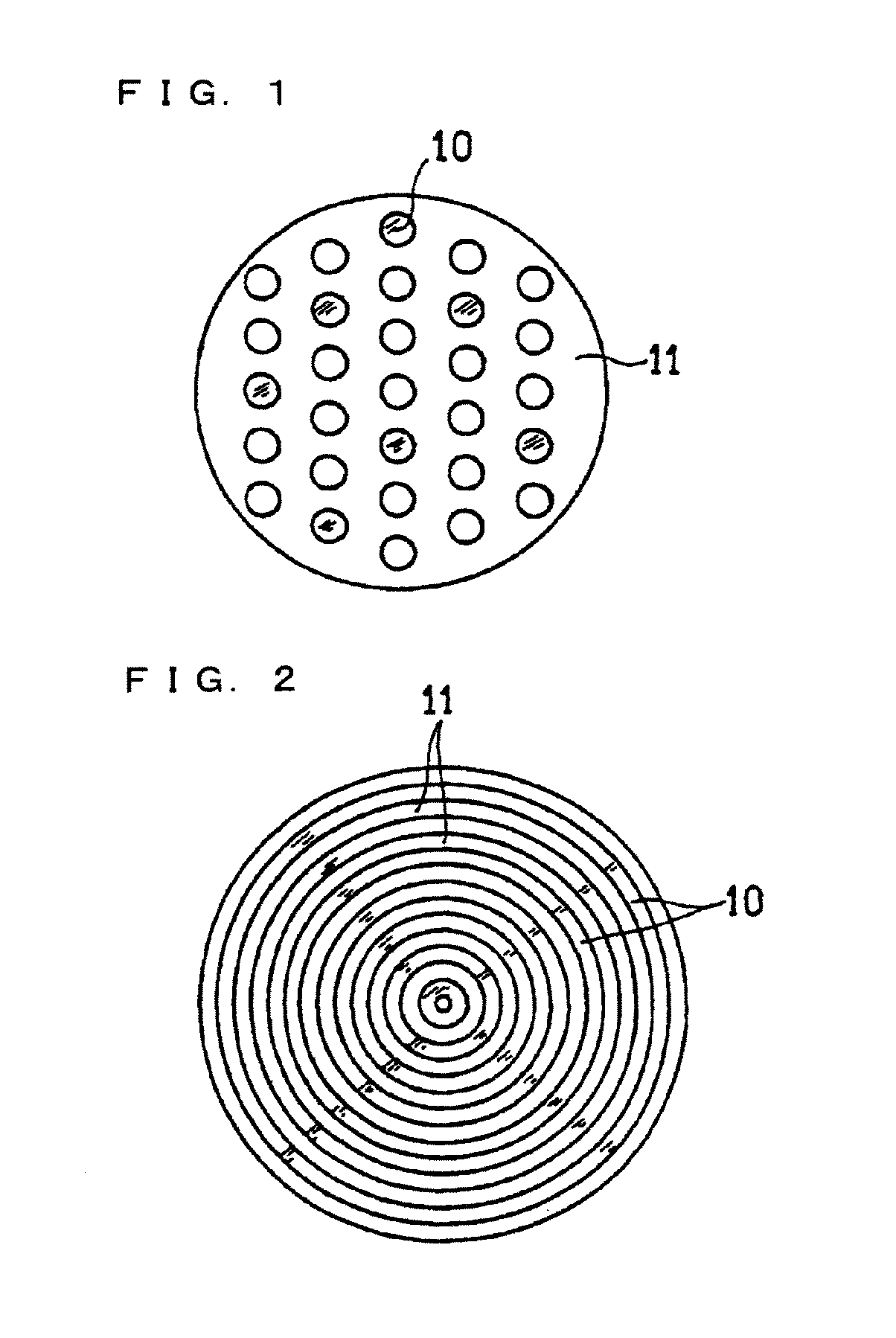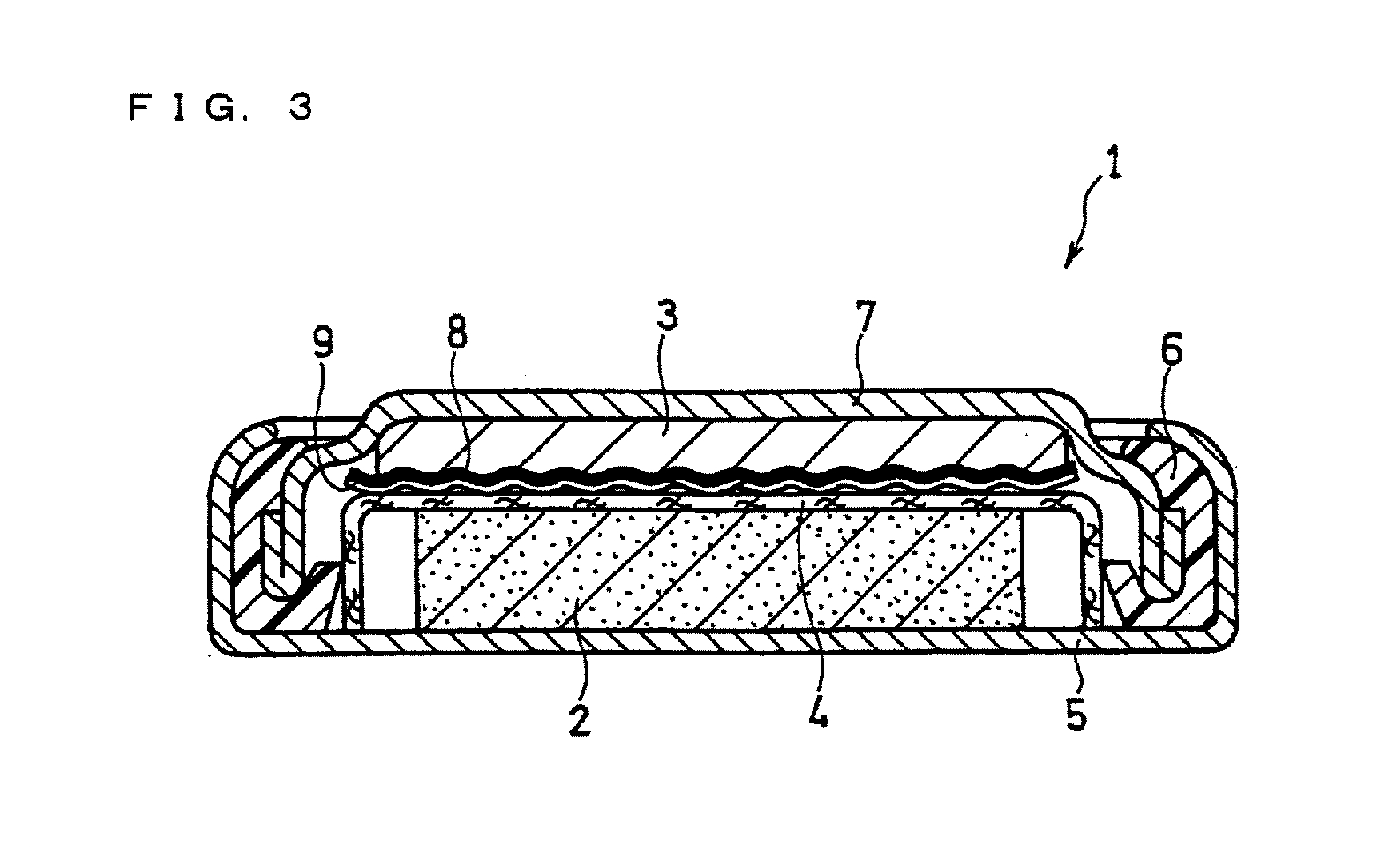Lithium primary battery and manufacturing method for same
- Summary
- Abstract
- Description
- Claims
- Application Information
AI Technical Summary
Benefits of technology
Problems solved by technology
Method used
Image
Examples
example 1
[0111]A coin type lithium primary battery of FIG. 3 was produced in the following manner.
(1) Production of Carbon Material Layer
[0112]Ethanol was added to a powder of acetylene black (Denka black, available from Denki Kagaku Kogyo K.K., average particle diameter of primary particles: 35 nm) as the carbon material, and mixed sufficiently. Further, water and polyacrylic acid as a binder (10 parts by weight relative to 100 parts by weight of acetylene black) were added to the mixture and mixed sufficiently, thereby obtaining a mixture in a paste form. A predetermined amount of the obtained paste was applied onto a nonwoven cloth made of polypropylene (thickness: 80 μm), and this was vacuum dried at 25° C. for a day and was perforated into a circle of Φ15.0 mm, thereby producing a composite component having a nonwoven cloth 9 and a carbon material layer 8 formed thereon.
[0113]The weight of the carbon material per unit area of the carbon material layer was determined by subtracting the w...
examples 2 and 3
[0122]A negative electrode 3 with a composite component adhering to a surface thereof was produced in the same manner as in Example 1 except that a pressing tool having convex portions of different heights was used. The heights of the convex portions on the surface of the pressing tool are shown in Table 1.
[0123]Lithium primary batteries (batteries 2 and 3) were produced in the same manner as in Example 1 except for using the obtained negative electrode.
example 4
[0124]A composite component was produced in the same manner as in Example 2 except for using a powder of carbon black (trade name: Carbon ECP, average particle diameter of primary particles: 39.5 nm, available from Lion Co., Ltd.) in place of the powder of acetylene black.
[0125]A lithium primary battery (battery 4) was produced in the same manner as in Example 1 except for using the obtained composite component.
PUM
 Login to View More
Login to View More Abstract
Description
Claims
Application Information
 Login to View More
Login to View More - R&D
- Intellectual Property
- Life Sciences
- Materials
- Tech Scout
- Unparalleled Data Quality
- Higher Quality Content
- 60% Fewer Hallucinations
Browse by: Latest US Patents, China's latest patents, Technical Efficacy Thesaurus, Application Domain, Technology Topic, Popular Technical Reports.
© 2025 PatSnap. All rights reserved.Legal|Privacy policy|Modern Slavery Act Transparency Statement|Sitemap|About US| Contact US: help@patsnap.com



